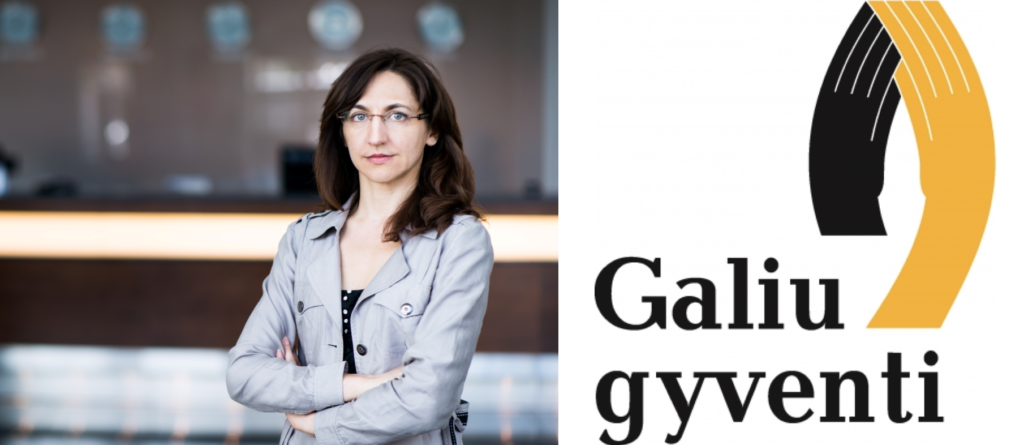
Tell me a bit about I Can Live and its involvement with harm reduction in Lithuania.
I Can Live is a coalition of NGOs and specialists who work to improve public policy for vulnerable populations of people who use drugs, including people who live with HIV, sex workers, and the homeless. We focus primarily on increasing their access to services, though we’re also starting to address drug policy as well.
How has the financing for your work changed in recent years?
Funding has been a real struggle for us. The NGO sector is weak in Lithuania, where there’s very little tradition of NGO work, especially in policy and advocacy. Since the government ignores the sector, our primary funding has come from international and regional donors. Our coalition also earns some money by offering professional services, such as organizing logistics for public health seminars held by the Open Society Foundations.
Although Lithuania was eligible for Global Fund grants for harm reduction and infectious disease prevention a decade ago, it never applied – and now that the World Bank classifies us as a high-income country, we’re no longer eligible. We do participate in a Eurasian advocacy project that the Global Fund finances through the Eurasian Harm Reduction Network.
After operating at a minimum level for a couple of years, we received a bit of money through the NGO program of the European Economic Area (EEA) Grants funded by Iceland, Liechtenstein, and especially Norway. This program has provided a lot of support to help NGOs expand their human rights advocacy and improve organizational sustainability, but right now there’s a gap until the next funding period starts. So we’re back to the bare bones. Most harm reduction service providers in Lithuania are funded by national and municipal bodies, but as an advocacy group, we receive essentially nothing from government.
What has proven most effective in obtaining the funding you have gotten?
Lots of planning and preparation – that’s our way. It might be easier at times to try and just give donors what they want, but we strive to uphold our professional standards.
Our advantage is that we positioned ourselves early on as a professional organization – we rely on evidence, we’re non-political, we avoid populist rhetoric. We base our advocacy on facts and rational arguments. We have also systematically cultivated relationships with key stakeholders in our country, and we only write proposals for things that we know how to do. Lots of planning and preparation – that’s our way. It might be easier at times to try and just give donors what they want, but we strive to uphold our professional standards.
Are there any funding strategies that you think harm reduction NGOs are overlooking?
NGOs in EU candidate countries should take advantage of that status. When Lithuania was a candidate country, there were external requirements for transparency and democratic rule, and for matching directives to EU values and regulations. Membership in the EU was a big carrot, so the government worked hard to satisfy those requirements – and our target groups benefited significantly.
But once we were a member state, it became easier for our decision-makers to ignore Brussels, especially on health issues, which the EU leaves countries to resolve largely on their own. And while the Lithuanian government made progress in many sectors, it didn’t really develop the human resources needed to address vulnerable populations.
What other funding advice do you have for NGOs working with harm reduction?
I believe that the way to achieve sustainable funding is to develop national financing mechanisms, because eventually the foreign money will dry up.
It’s difficult, but I believe that the way to achieve sustainable funding is to develop national financing mechanisms, because eventually the foreign money will dry up. So, the earlier you start your advocacy efforts – and they have to be continuous, strategic, and well planned – the better. It’s easy to do a lot with money from international donors, but you need to work toward having national and local government take responsibility for funding. And that’s neither easy nor quick.
For instance, in 2016 we finally got the Lithuanian National Patient Fund to finance opioid substitution therapy with methadone – and while coverage is still low, just half of what it was a few years earlier, getting the government to cover it as a routine medical treatment was a major achievement. It’s a long road, but getting the government to take responsibility for harm reduction is the only way to ensure sustainability.
Links
Ausra Sirvinskiene, Marija Jakubauskiene and Erika Matuizaite, Recommendations for developing harm reduction services and improving their quality in Lithuania
Hepatology, Medicine and Policy is now accepting submissions on this and related issues. For more information, visit www.hmap.biomedcentral.com.
Comments